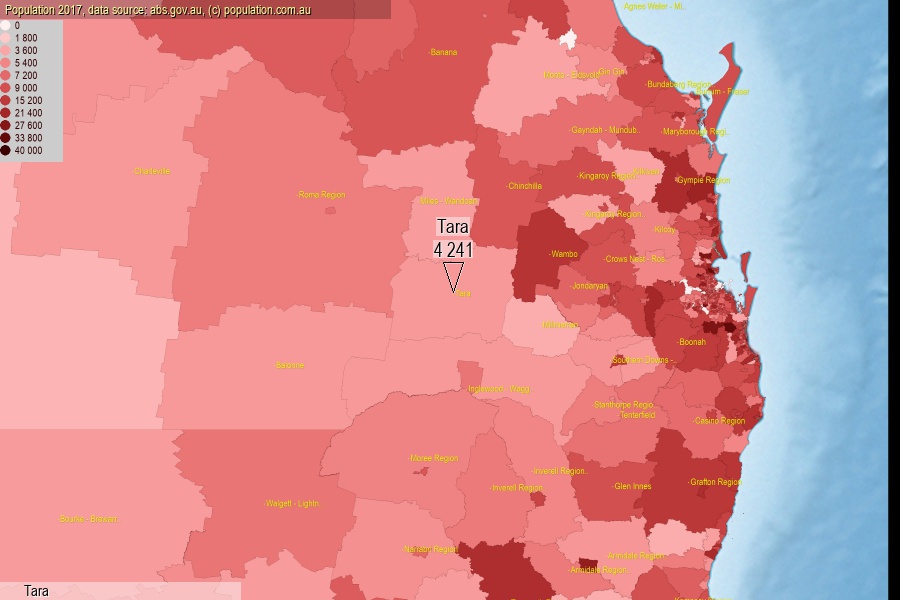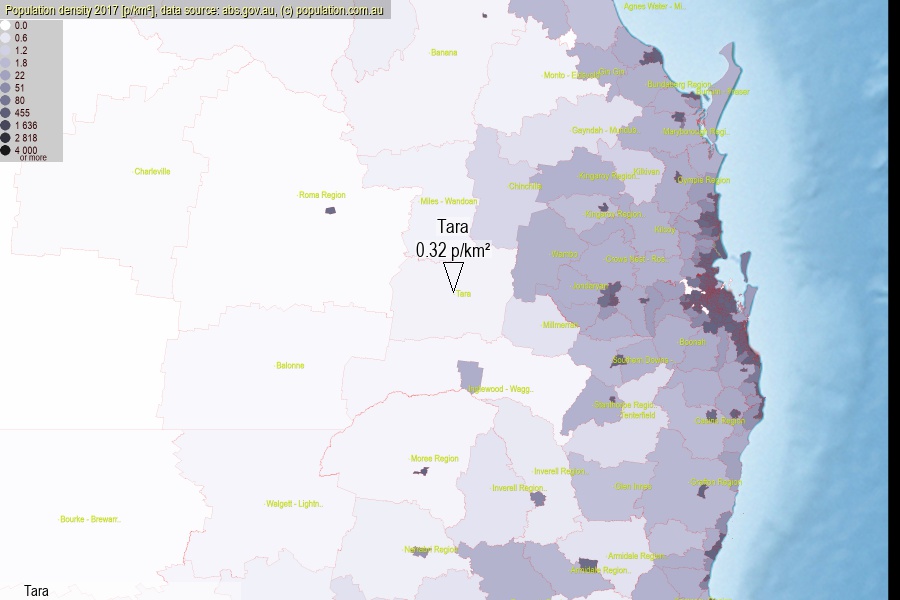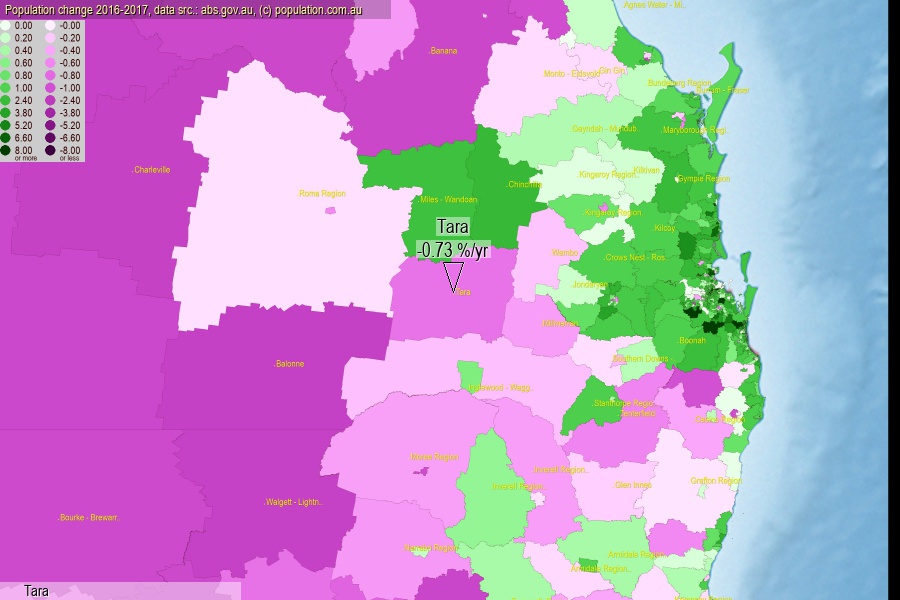 population.com.au
population.com.auLast official estimated population of Tara (as Statistical Area Level 2) was 4 241 people (on 2017-06-30)[2]. This was 0.02% of total Australian population and 0.085% of QLD population. Area of Tara is 13 208.40 km², in this year population density was 0.32 p/km² . If population growth rate would be same as in period 2016-2017 (-0.73%/yr), Tara population in 2025 would be 4 001. [0]



Click to enlarge. Tara is located in the center of the images.
Population [people], population density [p./km²] and population change [%/year] [2]
View borders » (new window) [4]
[1991-1992] -0.26 %/Yr.
[1992-1993] -0.41 %/Yr.
[1993-1994] -1.88 %/Yr.
[1994-1995] -2.01 %/Yr.
[1995-1996] -1.58 %/Yr.
[1996-1997] +0.81 %/Yr.
[1997-1998] +0.63 %/Yr.
[1998-1999] +0.33 %/Yr.
[1999-2000] +0.27 %/Yr.
[2000-2001] +1.15 %/Yr.
[2001-2002] +0.57 %/Yr.
[2002-2003] -0.47 %/Yr.
[2003-2004] -0.98 %/Yr.
[2004-2005] -0.55 %/Yr.
[2005-2006] -0.10 %/Yr.
[2006-2007] +0.75 %/Yr.
[2007-2008] +0.89 %/Yr.
[2008-2009] +1.18 %/Yr.
[2009-2010] +1.92 %/Yr.
[2010-2011] +1.05 %/Yr.
[2011-2012] +2.50 %/Yr.
[2012-2013] +0.71 %/Yr.
[2013-2014] -0.46 %/Yr.
[2014-2015] -0.64 %/Yr.
[2015-2016] -1.25 %/Yr.
[2016-2017] -0.73 %/Yr.
[0] Calculated with linear interpolation from officially estimated population
[1] Read more about SA2 and Australian Statistical Geography Standard (ASGS) on abs.gov.au
[2] Population data from Australian Bureau of Statistics (Population and density: 2017; change: 2016-2017)
[3] Digital Boundaries: Australian Statistical Geography Standard (ASGS) 2016.
[4] Border coordinates are simplifyed using Ramer-Douglas-Peucker algorithm.